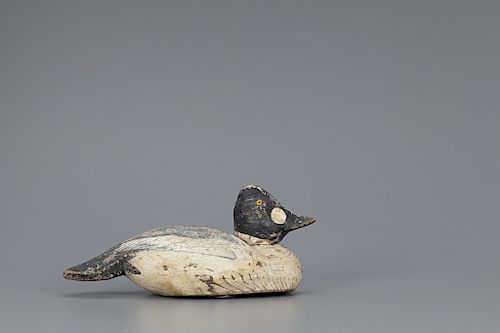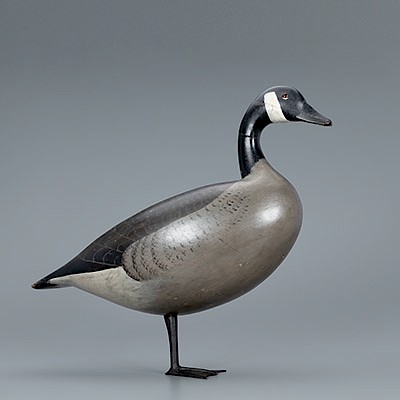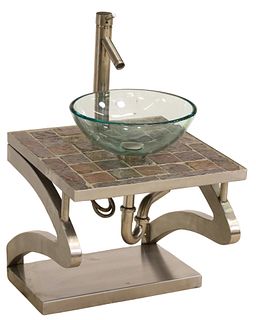Fat-Jaw Humpback Beavertail Goldeneye, The Ward Brothers
Lot 244
About Seller
Copley Fine Art Auctions
20 Winter Street
Pembroke, MA 02359
United States
Founded in 2005, Copley Fine Art Auctions is a boutique auction house specializing in antique decoys and American, sporting, and wildlife paintings. Over the course of the last two decades, the firm has set auction records for not only individual decoy makers, but also entire carving regions. Copley...Read more
Estimate:
$65,000 - $85,000
Absentee vs Live bid
Two ways to bid:
- Leave a max absentee bid and the platform will bid on your behalf up to your maximum bid during the live auction.
- Bid live during the auction and your bids will be submitted real-time to the auctioneer.
Bid Increments
| Price | Bid Increment |
|---|---|
| $0 | $50 |
| $1,000 | $100 |
| $2,500 | $250 |
| $5,000 | $500 |
| $10,000 | $1,000 |
| $25,000 | $2,500 |
| $50,000 | $5,000 |
About Auction
By Copley Fine Art Auctions
Feb 16, 2019
Set Reminder
2019-02-16 10:00:00
2019-02-16 10:00:00
America/New_York
Bidsquare
Bidsquare : The Winter Sale 2019
https://www.bidsquare.com/auctions/copley/the-winter-sale-2019-3820
The sale will offer the opportunity to view and take home world-class paintings and fine bird carvings. Featuring selections from the collections of Alfred Ely, L. H. LaMonte, Grant Nelson, Ronald S. Swanson, Herb Wetanson, and a descendant of Chester F. Spear among others. Copley Fine Art Auctions cinnie@copleyart.com
The sale will offer the opportunity to view and take home world-class paintings and fine bird carvings. Featuring selections from the collections of Alfred Ely, L. H. LaMonte, Grant Nelson, Ronald S. Swanson, Herb Wetanson, and a descendant of Chester F. Spear among others. Copley Fine Art Auctions cinnie@copleyart.com
- Lot Description
Fat-Jaw Humpback Beavertail Goldeneye
The Ward Brothers
Lemuel T. (1896-1984) and Stephen (1895-1976)
Crisfield, MD, c. 1918
15 1/4 in. long
This decoy displays all of the features that collectors of early Ward decoys and folk art look for. The fat-jaw style head is turned to the side and gazes skyward. The body has a humped back and a turned beaver-tail.
Original paint on a Ward decoy of this age is exceedingly rare. Lem’s original paint here shows a stylish design and appealing surface. With all of these original features, this ranks as one of the best early Ward goldeneye decoys known to exist.
In describing a related pair from the Ronald Gard Collection, author Bob Shaw writes, “These early Ward goldeneyes, called ‘fatjaws’ by collectors are an example of Steve Ward’s ability to capture the essence of a species’ form through stylized exaggeration.” Original paint with craquelure and gunning wear.
Provenance: Collectable Old Decoys
Herb Wetanson Collection
Literature: Ward Museum of Wildfowl Art, "Timeless Treasures: Ward Brothers Decoys," Salisbury, MD, 2007, pp. 17-18, exact decoy illustrated twice.
Robert Shaw, "Bird Decoys of North America," New York, NY, 2010, pp. 16-17 and 58, related example illustrated.
Ronald J. Gard and Brian J. McGrath, "The Ward Brothers' Decoys: A Collector's Guide," Plano, TX, 1989, pl. 22 and 23, p. 32, related examples illustrated.
Adele Earnest, "The Art of the Decoy: American Bird Carvings," New York, NY, 1965, p. 181, pl. 157, related example illustrated.
Exhibited: Salisbury, Maryland, "Timeless Treasures: Ward Brothers Decoys," The Ward Museum of Wildfowl Art, August 31 - November 11, 2007.Condition report requests can be made via email or by telephone (info@copleyart.com or 617.536.0030). Any condition statement given is a courtesy to customers, Copley will not be held responsible for any errors or omissions. The absence of a condition statement does not imply that the lot is in perfect condition.Condition
- Shipping Info
-
Shipping info
Copley Fine Art Auctions does not handle the shipping of any items. Shipping is the sole responsibility of the buyer. Once your payment has cleared, and we have received your authorized shipping release form items may be released for shipment. Copley Fine Art Auctions, LLC shall have no liability for any loss or damage to such items. Buyers should allow up to four weeks for shipment.Please be aware that internet bidders may NOT not pick up their items at the sale. Items will be available for pick up by appointment or by shippers five days after the sale.
-



 EUR
EUR CAD
CAD AUD
AUD GBP
GBP MXN
MXN HKD
HKD CNY
CNY MYR
MYR SEK
SEK SGD
SGD CHF
CHF THB
THB














